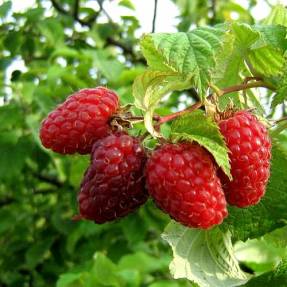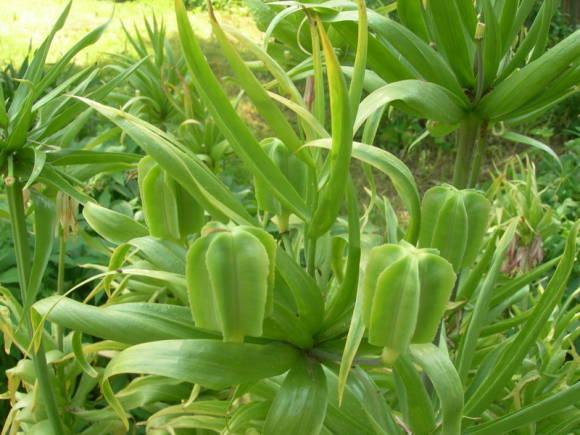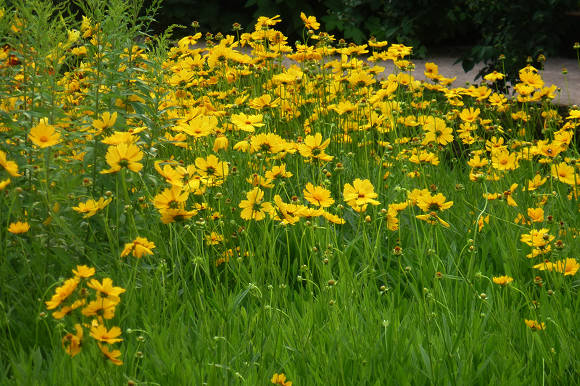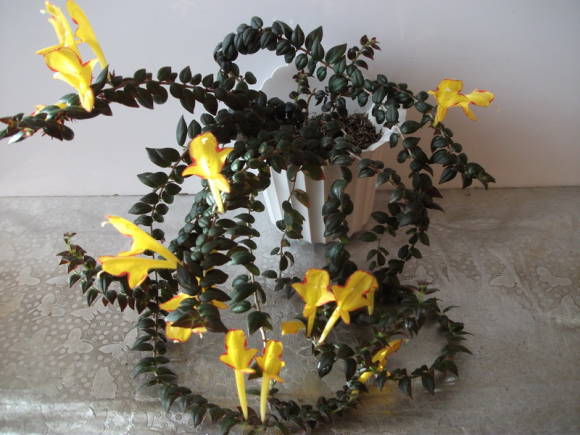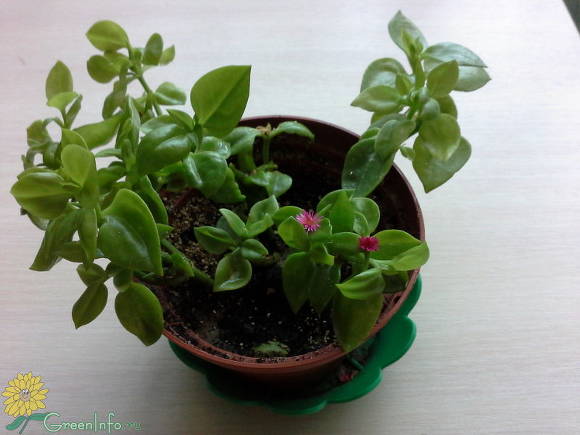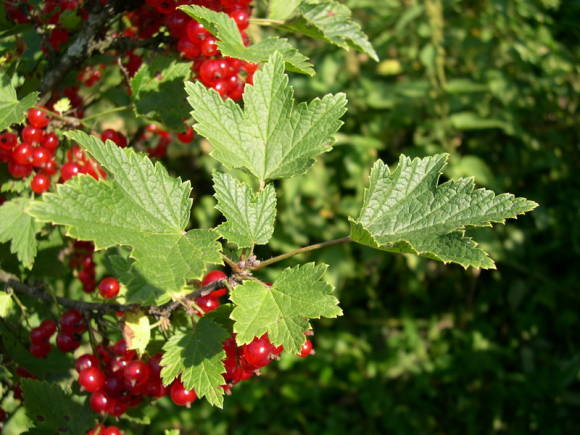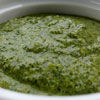Genus bird cherry(Padus) belongs to the Pink family (Rosaceae) and has about 20 species growing in Europe, East Asia and North America. However, Western botanists combine all bird cherry with plum. (Prunus), including apricot, cherry, etc., on the basis of a similar structure of fruits - drupes.
In Europe and Siberia, bird cherry is common, or avian(Padus avium) - a large shrub, sometimes a tree more than 10 m high. The bark on adult shoots is brown with white lenticels. In late April - early May, inflorescences with white fragrant flowers appear, collected in a brush about 10 cm long. It is no coincidence that it is also called the bird cherry.
 |  |
In central Russia, the flowering of bird cherry is a period that marks the arrival of the long-awaited spring. In the forest during this period, the loud-voiced trill of nightingales is heard. There is a lively belief among the people that the flowering of bird cherry is associated with a short-term cold snap, which really occurs in the middle lane. Then the warmth comes again, and now the bushes are fading, throwing crumbling white petals on the surroundings: “The bird cherry is covered with snow, The greens are in bloom and dew ...” (Sergei Yesenin, 1910).

In July, black drupe fruits ripen at the common bird cherry. They have a sweetish astringent taste and a very bright juice color. Fruits are one of the oldest medicines. In addition to organic acids, sugars (up to 5%), tannins are valuable - tannins that cause a tart and astringent taste. In folk medicine, the fruits are most often used for indigestion, for gastric tea and for the prevention of scurvy. (See article Bird cherry ordinary: medicinal properties).
Bird cherry is not always desirable in landscaping because of insects eating its leaves. Colonies of common bird cherry aphid or bird cherry ermine moth are often found, which severely damage shoots with leaves. The appearance of the foliage is spoiled by the bird cherry gall mite, which damages leaves and buds. Gardeners and gardeners strive to acquire original varieties that are more elegant and suffer less from "uninvited guests".
 |  |
Colorata (Colorata) with pale pink flowers and bronze-green leaves, selected in 1957 in Sweden, gained great popularity. A very similar variety is known to it Purple Queen (Parple Queen) - drooping, pink, with the smell of almonds, black fruits on burgundy stalks. Foreign varieties Plena (Plena) with double flowers and Summer Glow (Summer Glow) with red-burgundy leaves are not widely spread in Russia.
 |  |
Our domestic varieties include the variety Tenderness – tall, abundantly flowering shrub up to 4 m high with pink-white inflorescences. Domestic red-leaved varieties Krasny Shater, Purple Candle, Siberian Beauty are suitable for landscaping, having a bright crown in summer and autumn. Harvest varieties Sakhalin Black and Sakhalin Resistant are distinguished by tasty large black fruits, but are still common only in Siberia, where they were obtained.
 |  |  |
From the Far East, the Maak bird cherry was cultivated, or bearish(Padusmaackii) - a tree with a height of more than 15 m. It is used in landscaping and is easily recognizable in parks by its golden-bronze tint on the light brown bark, streaked with horizontal rows of lentils. Unlike common bird cherry, its leaves are ovoid, and the brushes are wider. Inedible small black fruits ripen in August. Inside the fruit there is a juicy dark purple pulp of a very bitter taste.
 |  |

In Eastern Siberia and the Far East, growing bird cherry(Padusasiatica), the leaves of which are covered with reddish pubescence from below along the main vein. However, many botanists do not recognize the independence of this species, classifying it as a geographical variety of the common bird cherry.
 |  |
Another Far Eastern bird cherry is interesting, which is rarely found in culture. This is about bird cherry Siori(Padus ssiori)... It also grows in the north of Japan, in the south of Sakhalin and the Kuril Islands, where it has a local name - "Ainu bird cherry".A tree with a narrow crown reaches a height of 5 m. The bark is dark gray, also with large lenticels. The leaves are elongated-elliptical with a sharp-edged edge. Inflorescences are narrow, long brushes, Fragrant flowers. The fruits are black fleshy drupes, twice as large as those of the common bird cherry, with a pleasant taste. In Moscow, it is stable, gives root shoots. In the open area, the leaves burn in summer, the fruits are tied weakly and not every year.
In the Far East there is bird cherry Maximovich(Padusmaximowiczii) - a tall tree (over 10 m) with light gray bark. However, it is often referred to as cherries (Cerasusmaximowiczii). She has obovate leaves, double-toothed along the edge and with pronounced venation, which is not very typical for bird cherry. The brush contains 3-9 white flowers with large toothed bracts. Rounded drupes (6 mm in diameter) turn from red to black as they ripen. The fruits are inedible, the taste is bitter. The plant is winter hardy.
 |  |

From Japan bird cherry(Padusgrayana) - a tree with a spherical crown and dark bark, more than 7 m high. The leaves are oval, with a strongly elongated apex, up to 8 cm long. The flowers are creamy white, in racemes up to 10 cm long. The species blooms in May. The fruits are black drupes. The chemical composition of plant organs has not been studied, but it is known that the content of hydrocyanic acid is less than that of common bird cherry. In folk medicine, the plant is not used, while in Kyrgyzstan, an extract from the aerial part of the plant is popularized, which increases immunity, like ginseng, which is necessary for infectious and oncological diseases. Probably, the plant can withstand the climate of Central Russia. It is winter-hardy, grows well under the forest canopy with moderate moisture.
Some North American bird cherries are widespread in Russia. The most common bird cherry is virginiana (Padusvirginiana), originating from central North America. In Moscow, it grows mainly in the form of a multi-stemmed bush with a height of 3-5 m, which gives abundant root shoots already at 2 years of age. In parks and gardens, it forms large clumps with uneven-aged shoots, drowning out neighboring plantings. Oval-lanceolate leaves are located on dark brown shoots. In May, white flowers appear, collected in 15-30 pieces in narrow brushes. Dark red drupes with a diameter of 1 cm are edible, but have a sour astringent taste. In decorative gardening, red-leaved varieties are appreciated - Atropurpurea (Atropurpurea) and Shubert (Schubert) with darker, burgundy-purple leaves.
 |  |
In Siberia, as a result of hybridization of Virginia bird cherry with ordinary bird, breeders obtained winter-hardy hybrid varieties Pamyati Salamatova, Mavra, Pozdnyaya Radost, Rannyaya Kruglaya, Cherny Blesk and Plotnokistnaya. The inflorescences of these varieties are elegant, large, with white flowers. The leaves are dark green. Fruits are shiny black, weighing up to 0.7-0.9 g. They are edible, of good taste. The fruits contain 24-34% dry matter, 10-16% sugars, 0.8-1.5% organic acids, 10-16 mg / 100 g of ascorbic acid. Fruit yield - more than 10-15 kg per tree.
 |  |  |
 |  |  |
Bird cherry late (Padus serotina) comes from the eastern regions of North America. A tall, slender tree with a dark brown aromatic bark reaches a height of 7 m. Leaves are oblong-ovate or lanceolate, up to 12 cm long, with a finely serrate edge. When blooming, the leaves are bronze-green, shiny in summer, dark green. It blooms later than the common bird cherry, which is why it got its name. The flowers are white, collected in a cylindrical raceme up to 14 cm long. Drupes are spherical, 8-10 cm in diameter, at first red, and in September almost black. Unlike other bird cherries, sepals are preserved at the base of the fruit. The fruits are edible, drinks are prepared from them, used to make rum. In America they are called "black cherry", and in Europe - "American cherry". Bark extracts are used in medicine as a sedative and tonic.
 |  |
Late bird cherry is prized in ornamental gardening.She selected forms that differ in the outline of the crown (Pendula, Pyramidalis), in the leaves (Asplenifolia, Salicifolia, Cartilaginea), in the density of inflorescences (Montana). The varieties are especially decorative: Variegata - with variegated leaves and Plena - with double flowers.
In central Russia, late bird cherry is rare. In Moscow, its shoots often freeze slightly, the plants begin to bush and give stem growth, losing their decorative effect. At the same time, sometimes there are individual specimens, regularly flowering, fruiting and self-seeding. Late bird cherry is almost not damaged by aphids, leaf-gnawing insects, as well as common stone fruit diseases - clasterosporia and coccomycosis.
In central Russia, you can find the North American bird cherryat Pennsylvaniayu(Padus pensylvanica) - a shrub or tree up to 7-10 m high, the trunk of which is quickly exposed. This bird cherry does not have the lodging of the lower branches and their rooting, as in the common bird cherry; lignified rhizomes are not formed, like the Siori and Virginia bird cherry, there is no root growth, like the blackthorn. The pennsylvanian bird cherry has ovoid shiny leaves with a serrate edge. The flowers are white, collected in short clusters up to 4 cm long, the fruits are first red, then black, edible, with a diameter of 0.6 cm.Lately, they tend to be attributed to cherries called Pennsylvania cherry (Cerasus pensylvanica).
 |  |
All bird cherries reproduce by seeds. Freshly harvested seeds are sown in the ground in the fall so that they will sprout next spring. The Maak bird cherry seeds germinate in June; at the Siori bird cherry - in the spring for the second year. Spring sowing, in late April - early May, is advisable only after seed stratification (from 4 to 7 months). Cuttings are poorly rooted: in late bird cherry - 15%, bird cherry Siori and Maak - less than 30%. The most valuable forms and varieties are propagated by copulation (spring grafting by cutting) - by the bark, into the split, as well as by the method of improved copulation. Budding is performed mainly in a T-shaped incision, less often in the butt.
